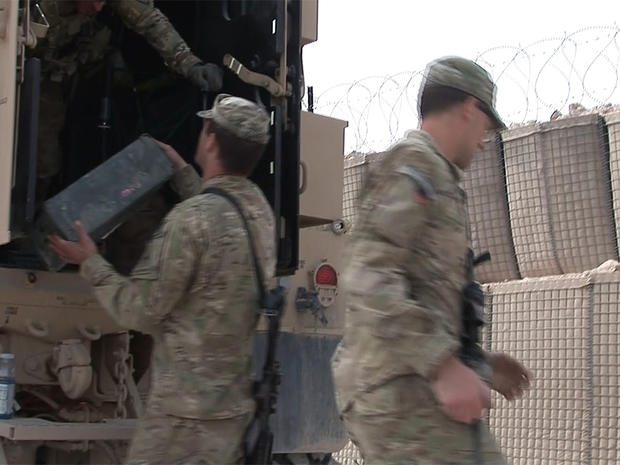U.S. troops tackle daunting, dangerous task of leaving Afghanistan
NEAR KANDAHAR, AFGHANISTAN The moment Lt. Tyrus House arrived at the remote outpost outside Kandahar, he and his platoon began stripping it down to leave.
"It's obviously something we're willing to do," he said, smiling, "but hopefully we won't have to pack up another one."
Like most members of the 1st Armored Division from Fort Bliss, Texas, Lt. House came here to fight the Taliban, not pack boxes.
They may end up doing both.
Combat Outpost Timothy Johnson sits in the Arghandab Valley, which not long ago was one of the most deadly places for American servicemen and women in Afghanistan.
U.S. troops fought and died in fierce battles to push the Taliban out only two summers ago. The outpost, built in 2010, is named after a soldier who died in that fighting.
This is where the Taliban first rose up. They consider Kandahar City theirs, and when they have advanced on the city, they've come from the north, right through this valley.
The troops here are expecting a fight, and it's in these final hours that the outpost is most vulnerable.
- U.S.'s Afghan reconstruction efforts doing more harm than good?
- Pentagon changes tune on 2012 Taliban attack numbers
- Karzai orders U.S. out of province amid torture claims
Once the heaviest weapons are packed away, Lt. House told us, the last things to go will be the surveillance cameras. When the camera towers come down, the Americans pretty much pack up and go.
But the night after the cameras came down there were still soldiers at the outpost. Most of the platoon had to defend the base through the night, taking positions in guard posts and patrolling the grounds outside it.
With about half of the U.S. troops in Afghanistan set to head home within a year, the military is being forced to do more with less.
In this case, that means leaving a skeleton crew of Afghan police to try and hold onto hard-won real estate -- freeing up U.S. troops to take the fight to the Taliban.
Lt. Col. James Van Atta is the commander tasked with making that gamble pay off.
"As we withdraw from certain areas," said Atta, "you still maintain strength and demonstrate to the enemy, that, you know, 'give it a try -- we're ready.'"
The American to-do list is long: Finish training Afghan forces, close down bases and move 70,000 shipping containers and 28,000 vehicles out of the country, all while providing the protection necessary for troops to do it.
Soldiers ripped everything out of this outpost -- right down to electricity cables; anything which might be used to make homemade bombs. Every last bullet was counted, packed up and loaded onto an armored truck.
The military calls it "retrograding." It's a mammoth task, and an expensive one. The Department of Defense puts the cost of shipping a single container or vehicle at between $8,000 and $153,000.
A lot of the bases, like Combat Outpost Timothy Johnson, are located in remote areas with nothing but dirt roads. It's a lot easier to hide bombs in dirt roads than paved ones. They also tend to be in areas where the Taliban presence remains strong.
But one of the biggest problems is that Afghanistan is landlocked, unlike Iraq, where logistics teams had a dependable ally in neighboring Kuwait, and a seaport.
The cheapest and easiest land routes out of Afghanistan are through Pakistan: from Kabul in the northeast, through the mountainous Khyber Pass, and from Kandahar in the south, then on to the Pakistani port of Karachi.
But America's tense relationship with Pakistan has seen those border crossings shut down for periods of time, as recently as last year. Convoys have come under repeated attacks on both sides of the border, and there's already a backlog of thousands of containers.
Keeping the border crossing open now is far from certain.
What is certain, is that the clock is ticking: fewer than 22 months remain before the U.S. combat mission here ends, and the bulk of equipment has to be gone.
The warm-weather fighting season has only just begun. Soldiers say the only military maneuver as dangerous as getting into a war, is getting back out.
The U.S. military calls moving men and machines into a war zone "The Push." As America's longest war comes to an end, it's all about The Pull.

